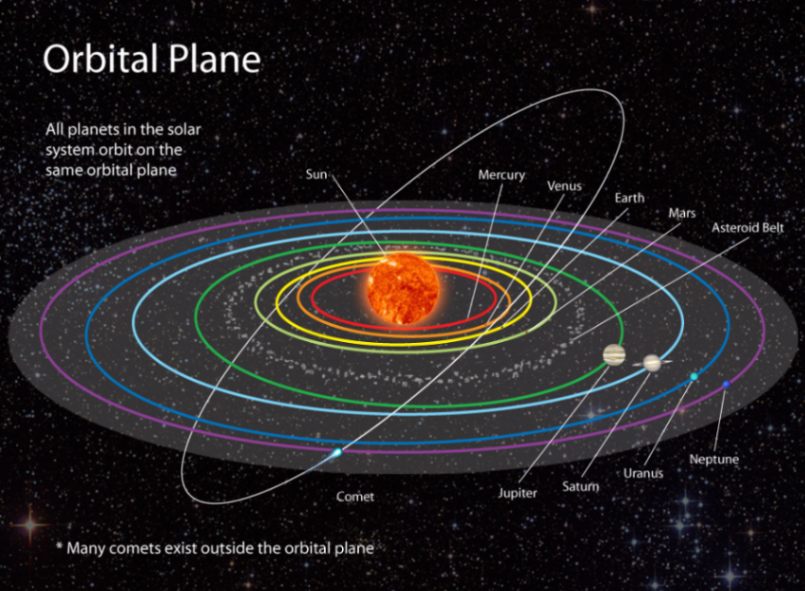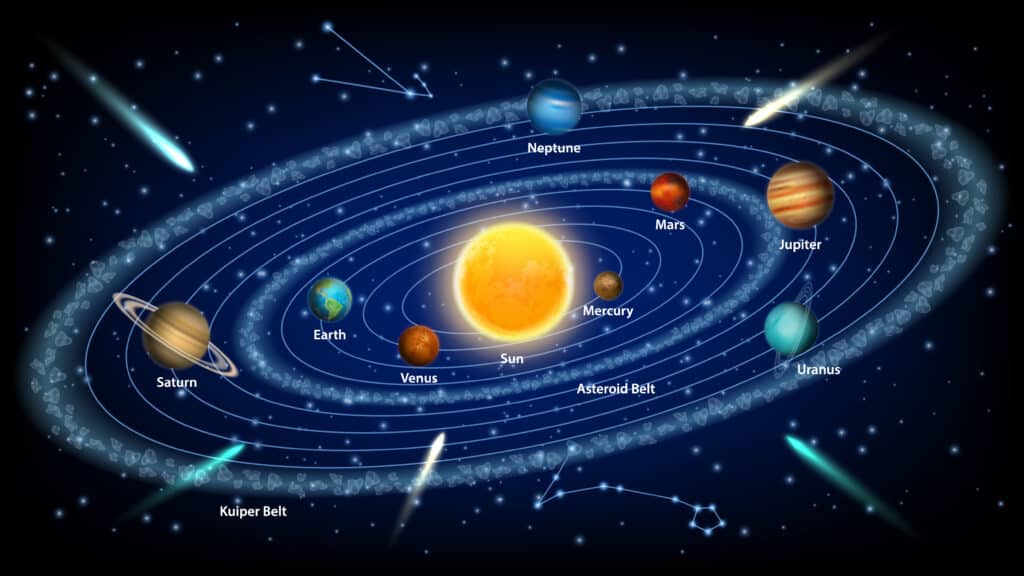The planets in our solar system stay in their orbits around the Sun due to a perfect balance between two forces: gravity and inertia. Gravity is the force that pulls objects towards each other. In this case, the Sun’s gravity pulls the planets towards it. Inertia, on the other hand, is the tendency of an object to keep moving in a straight line. The planets are constantly trying to move straight, but the Sun’s gravity pulls them inwards, creating a curved path called the orbit.

Imagine you’re swinging a ball on a string around your head. The string pulls the ball towards you, much like gravity pulls the planets towards the Sun. The ball’s movement around you is like a planet’s orbit. If you let go of the string, the ball would fly off in a straight line. This is similar to what would happen if gravity suddenly disappeared; the planets would fly off into space.
However, if the ball is not moving fast enough, it will fall towards you instead of staying in orbit. Similarly, if a planet’s speed along its orbital path is too slow, it will spiral into the Sun. This balance is crucial. The planets have just the right speed to keep falling towards the Sun but also keep missing it, thus staying in a stable orbit.
Now, why do the speeds of the planets decrease from Mercury to Neptune? The answer lies in the distance from the Sun. Mercury, the closest planet to the Sun, travels at a speed of about 47.87 kilometers per second. It needs to move quickly to counteract the Sun’s strong gravitational pull. On the other hand, Neptune, the farthest planet, travels much slower, at about 5.43 kilometers per second. The gravitational pull from the Sun is weaker at such a great distance, so Neptune doesn’t need to travel as fast to stay in orbit.

Each planet’s speed is just right for its distance from the Sun, ensuring it stays in a stable orbit. If a planet were to slow down too much, it would fall into the Sun. If it were to speed up significantly, it could potentially escape the Sun’s gravity and leave the solar system.
A planet leaves the solar system when it gains enough speed to overcome the Sun’s gravitational pull. This can happen due to gravitational interactions with other planets or if a planet somehow gains extra speed. For instance, if a massive object like a passing star came close enough to our solar system, it could disrupt the orbits of the planets. A planet might then get flung out into space, leaving the solar system.
It’s important to note that while the planets’ orbits are stable, they are not perfect circles. They are slightly elliptical, meaning they are oval-shaped. Besides planets, our solar system also contains other objects like comets and asteroids. These objects also orbit the Sun, but their paths can be more irregular. Some comets, for example, have highly elliptical orbits, bringing them very close to the Sun before shooting back out to the distant reaches of the solar system.
Think About
Is it a coincidence that all the planets have the right speed for their distance from the Sun?
Reference Links:
https://www.columbiatribune.com/story/lifestyle/family/2018/01/23/how-do-planets-stay-in/16023204007
https://sciencing.com/moon-affect-earths-seasons-8678293.html
https://science.nasa.gov/learn/basics-of-space-flight/chapter3-3
